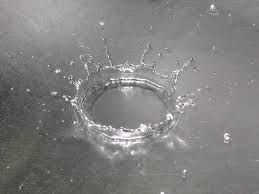Today marks my official declaration of fidelity and discipleship to the Path of Immersion. Along with that declaration, I also invite you to join me in whatever capacity feels the most suitable. The Path of Immersion is not one which demands conversion, evangelism, worship, or exclusivity. Along this path, I am no master, for there are no masters, clergy, or established hierarchies in this discipline, only students. I do however, welcome companions.
Project Conversion was the vehicle by which I arrived at the Path of Immersion, so let’s briefly explore the four steps along that journey, culminating in the present. This path pervades many traditions and can apply to your personal journey as well.
Presentation of Change:
Every good story involves what Joseph Campbell’s The Hero’s Journey calls the “Call to Action.” This is the impetus which fuels the abandonment of one’s normative experience and segues them onto a path of transformation. We all receive this call, this presentation of change, at least once in our lives, but not everyone answers. This presentation of change might represent anything, from adopting a healthier lifestyle, to launching a social justice movement, or even the precipice of conversion.
My personal presentation of change came when I realized I could no long hate others simply for harboring religious faith.
Accepting the Cost:
The reason we often refuse the call is simple: Cost.
All change, as is represented in one of my favorite symbols, the phoenix, requires the death or reduction of something in order to manifest another. The phoenix bursts into flames, reducing itself to ashes, only to be reborn. In the Path of Immersion (which involves any degree of change), one must accept the cost of that experience, the transfer of energy toward something new.
This cost might include the suspension of prejudice, inflated ego, a span of time, the risk of losing family, friends, or even one’s life. Nothing in this world is free. Destruction then, becomes the cradle of creation.
The cost of Project Conversion included a year of my life, the patience and endurance of my family, and my former preconceived notions about people of faith.
Taking the Plunge: Immersion:
The Path of Immersion is stepping off the pier of our comfort zone into unknown waters without reservations, and accepting whatever outcome awaits once we break the water’s surface and inhale as a new creature for the first time.
When we plumb the depths of another life or perspective, we invariably swim deeper within ourselves. Humanity then, for the Immersionist, becomes a network–a map–guiding us toward glorious treasures used in the commerce of experience and compassion.
Project Conversion involved completely immersing myself into the lives and perspectives of people I once loathed.
Neo Genesis: A New Beginning:
The waters of transformation are the cocoon in which metamorphosis occurs. That said, just as the butterfly must break free, so must the Immersionist crest those waters and take her first breath as a new creature. This is why the Buddha instructs us to leave behind the raft once we reach the other side of the river. Although the experience of transformation is important, it can become an anchor to our new selves. The Path of the Immersionist then, is a constant cycle of growth and shedding, creation and deconstruction, the phoenix burning and raising anew from the fertile ashes of experience.
Therefore an Immersionist knows that just as there are ever deeper seas to explore, a master in this Path is a student humbled, and therefore perfected.
Above all, the Path of Immersion is a discipline of transformation. Indeed, no science is more subversive, humbling, or liberating as the study of one’s self. The Immersionist goes spelunking into the depths of humanity and the variety of ideals, and with each return gains a larger perspective and a greater appreciation for nuance.
I hope you’ve enjoyed this brief introduction on the major points of the Path of Immersion. Have you received a “presentation to change”? How do you think you can apply these techniques in your life, faith, or philosophy?



